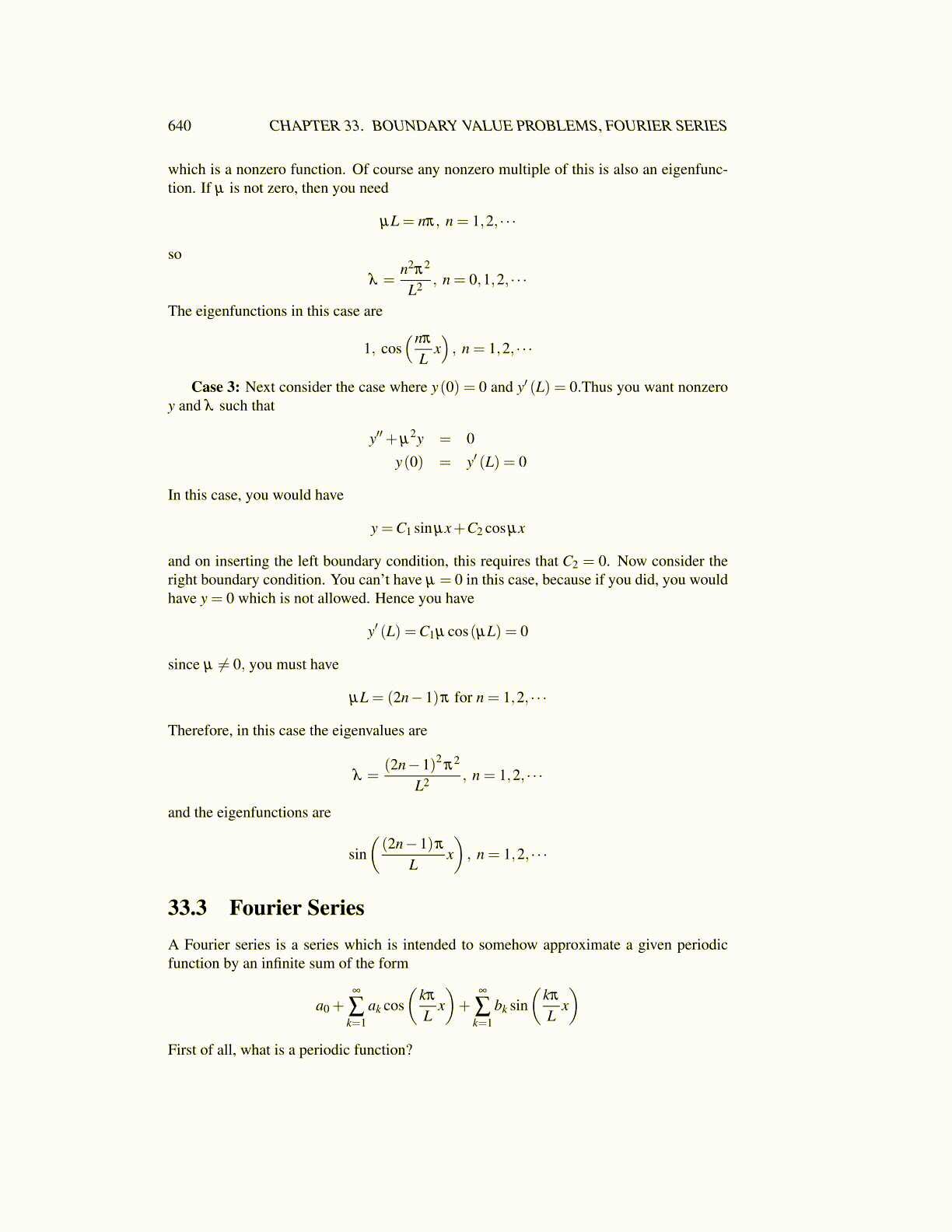
640 CHAPTER 33. BOUNDARY VALUE PROBLEMS, FOURIER SERIES
which is a nonzero function. Of course any nonzero multiple of this is also an eigenfunc-tion. If µ is not zero, then you need
µL = nπ, n = 1,2, · · ·
so
λ =n2π2
L2 , n = 0,1,2, · · ·
The eigenfunctions in this case are
1, cos(nπ
Lx), n = 1,2, · · ·
Case 3: Next consider the case where y(0) = 0 and y′ (L) = 0.Thus you want nonzeroy and λ such that
y′′+µ2y = 0
y(0) = y′ (L) = 0
In this case, you would have
y =C1 sin µx+C2 cos µx
and on inserting the left boundary condition, this requires that C2 = 0. Now consider theright boundary condition. You can’t have µ = 0 in this case, because if you did, you wouldhave y = 0 which is not allowed. Hence you have
y′ (L) =C1µ cos(µL) = 0
since µ ̸= 0, you must have
µL = (2n−1)π for n = 1,2, · · ·
Therefore, in this case the eigenvalues are
λ =(2n−1)2
π2
L2 , n = 1,2, · · ·
and the eigenfunctions are
sin((2n−1)π
Lx), n = 1,2, · · ·
33.3 Fourier SeriesA Fourier series is a series which is intended to somehow approximate a given periodicfunction by an infinite sum of the form
a0 +∞
∑k=1
ak cos(
kπ
Lx)+
∞
∑k=1
bk sin(
kπ
Lx)
First of all, what is a periodic function?